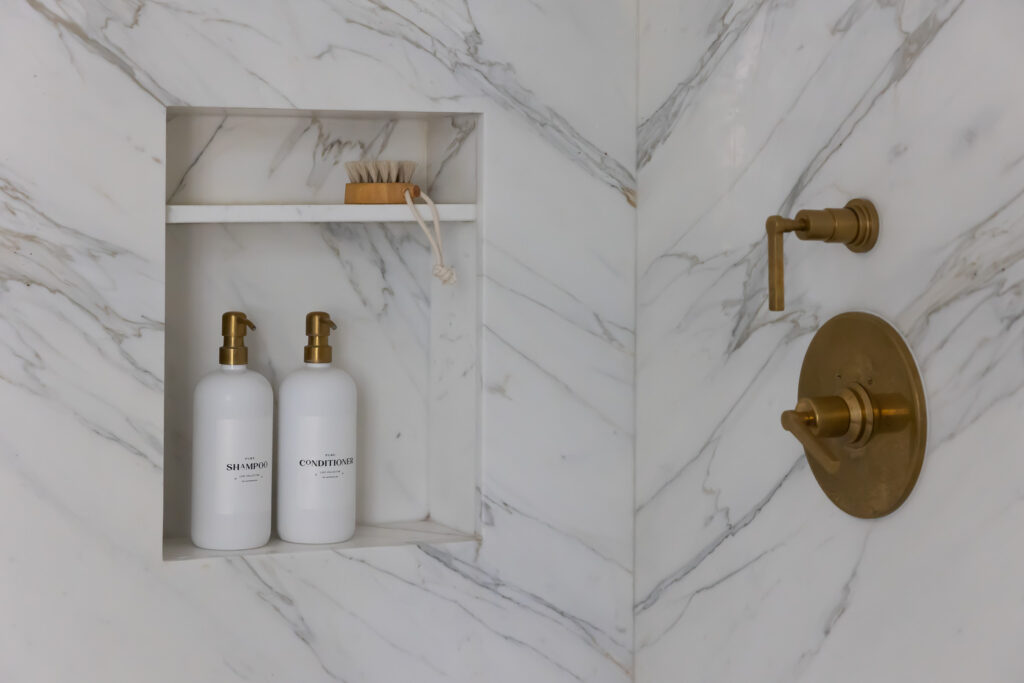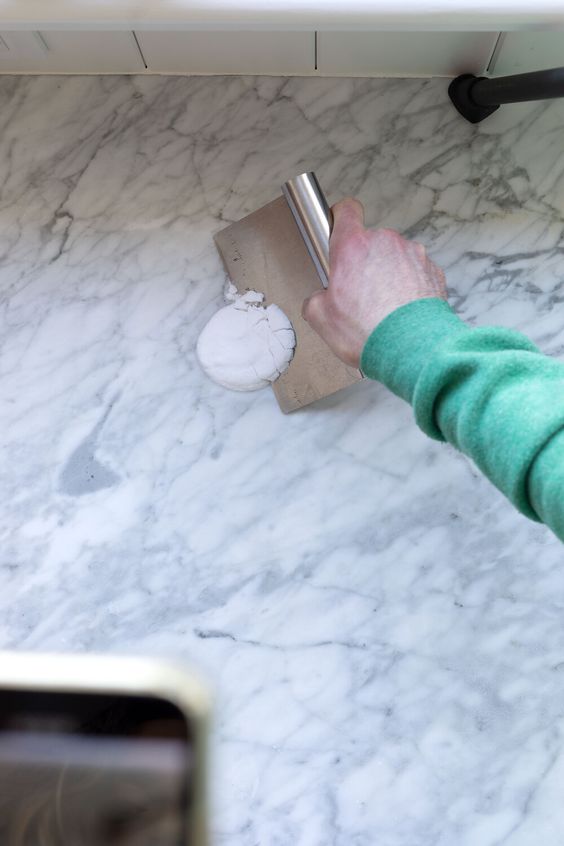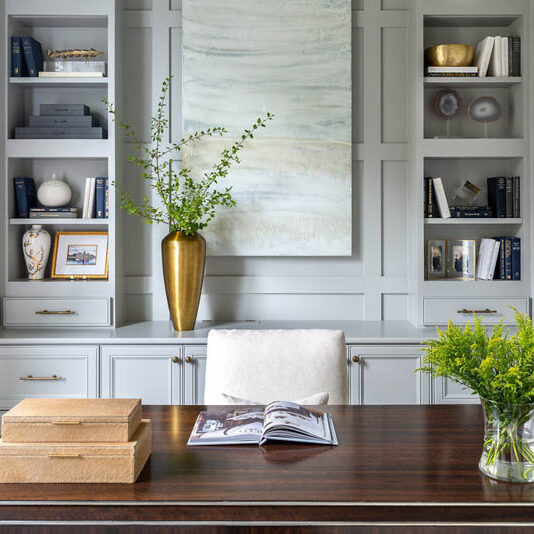Marble is one of my favorite types of natural stone to use in a project. With its unique veining and elegant beauty, there’s no recreating what mother nature has already perfected. This timeless stone continues to be a popular choice for countertops, floors, and other surfaces in homes. However, one common issue that you may encounter with white marble is yellowing. If you are having this issue, don’t panic, this can be common but there are ways to fix and prevent it altogether.

As with any natural stone, it’s important to understand how to care and maintain it but also understand that part of the appeal is that it changes over time. Let’s break down the reasons why marble can turn yellow and explore preventive measures and solutions to avoid this.
Yellowing of marble can occur due to various factors, including iron oxidation, wear and tear, improper cleaning, wax build-up, and crystallization during polishing. Understanding these reasons is crucial for effectively preventing or remedying yellowing issues. By implementing proper maintenance techniques and taking proactive measures, you can preserve the beauty of your marble surfaces.
Iron Oxidation- Iron present in marble can oxidize when exposed to water, acids, or bleach, resulting in yellow discoloration.
Wear and Tear- As the polished surface of marble wears down, dirt can become trapped in its pores, leading to a yellow appearance.
Improper Cleaning- Using dirty mops or cloths to clean marble surfaces can cause dirt accumulation, contributing to yellowing over time.
Wax Build-Up- Application of waxes on marble surfaces can lead to the build-up of yellowed residues, necessitating stripping of the stone for removal.
Crystallization- Moisture present during the polishing process can cause marble to yellow over time, requiring remediation such as honing or powder marble polish.

How to Avoid It
- Regularly clean marble surfaces with non-abrasive sponges and mild dish soap or stone cleaner to prevent dirt accumulation. I like to use this one.
- Avoid using waxes on marble surfaces and opt for high-quality, penetrating sealers designed specifically for marble. You should have your stone sealed every 8-10 months. You can either hire a professional company or do it yourself. If you opt to do it yourself, try this sealer.
- Clean up messes immediately. Don’t allow a spill to sit overnight. That goes for any type of surface! Think about spilling something on a piece of fabric, you want to get it out as soon as possible and the same principle applies here.
There’s a product I came across recently called Tuffskin that is a protective film you can apply to your countertops. It comes in 2 finishes- satin for honed countertops and gloss for polished countertops. This film helps to prevent etching, staining, it’s heat resistant and removable & replaceable.

Image via Tuff Skin
How to Fix it
- Make a thick paste using baking soda and a small amount of water and apply it to the stain. Then you’ll cover it with plastic wrap and let it sit for 24 hours. Then remove the plastic and wipe off the paste with a damp cloth. If the stain is still there, try mixing the baking soda with hydrogen peroxide and let it sit longer.
- Professional cleaning with a heavy-duty stone cleaner can help remove yellowing due to improper cleaning practices.
- Strip the stone to attempt removal of yellowed wax build-up.

Image via Grit and Polish
While yellowing of marble surfaces can be a concerning issue, understanding the underlying reasons and implementing preventive measures can help you maintain the beauty of your marble. By adhering to proper cleaning and maintenance practices and seeking professional assistance when necessary, yellowing issues can be effectively addressed, ensuring that the beauty of your marble endures over time.

